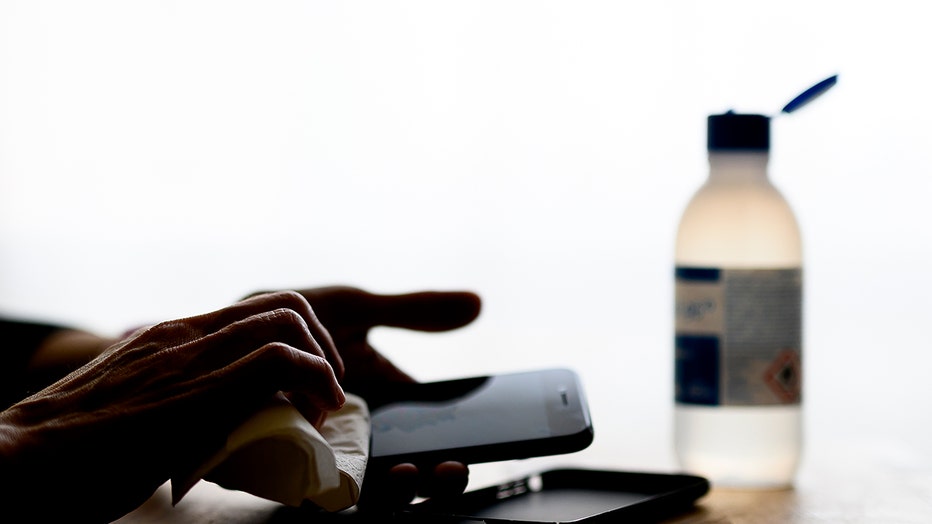COVID-19 virus can survive for up to 28 days on common surfaces, study finds
LOS ANGELES - From the moment you wake up and turn off your morning alarm, you can come into contact with many surfaces: your phone, your computer, door handles — the list goes on.
A recent study uncovered new information about SARS-CoV-2, the virus that causes COVID-19, and how it behaves on surfaces, revealing that the virus can survive on surfaces for significantly longer than previously thought.
In the study, published in Virology Journal, Australian researchers dried a droplet of fluid containing the virus at concentrations similar to levels observed in infected patients on six common small test surfaces and left it for up to 28 days.
RELATED: Man who fought COVID-19 for months now faces lingering side effects
The surfaces used in the study were stainless steel, glass, vinyl, paper and polymer banknotes, and cotton cloth — surfaces which are common and considered high-contact.
Researchers conducted the experiment at three different temperatures: 20°C (68°F), 30°C (86°F) and 40°C (104°F), with the relative humidity kept at 50%.
They found that the virus responsible for COVID-19 was “extremely robust” at lower temperatures (20°C) and remained infectious for a longer period when compared to higher temperatures. At 20°C, the virus was detectable after 28 days.
The study also found that the virus lived longer on smooth (non-porous) surfaces, including stainless steel, glass, vinyl and paper and polymer banknotes.
The length of time infectious virus was able to survive on the porous material (cotton cloth) was shorter. On cloth, researchers were unable to detect any viable virus past 14 days.

a mobile phone is seen before cleaning to avoid Coronavius on March 23, 2020 in Burgos, Spain. (Samuel de Roman/Getty Images)
At 30°C, the infectious virus did not survive beyond seven days on stainless steel, money (polymer banknotes) and glass. On vinyl and cotton cloth, it was not detectable beyond three days.
At 40°C, the virus was inactivated much faster. Infectious SARS-CoV-2 was detectable for less than 16 hours on cotton cloth. On glass, paper and polymer notes, and stainless steel, it was detectable for up to 24 hours, and for up to 48 hours on vinyl.
RELATED: Coronavirus can live on skin for 9 hours, Japanese researchers say
“The results from our study confirm that high-contact surfaces may pose a risk,” Fiona McFarlane, communication advisor with The Commonwealth Scientific and Industrial Research Organization, wrote. “These are the type of surfaces that have a significant number of different people touching them each day. They include bank ATMs, handrails, door handles, elevator buttons, supermarket self-serve check-outs and money.”
The findings reinforce messages by the World Health Organization and U.S. Centers for Disease Control and Prevention that people should avoid touching their eyes, nose and mouth and should wash their hands thoroughly.
While the coronavirus is typically spread from person-to-person via droplets from the nose or mouth, the WHO said it is possible to become infected when droplets land on objects and surfaces, since people touching infected surfaces may then touch their eyes, nose or mouth.
RELATED: CDC changes COVID-19 guidance again, saying coronavirus is airborne
“The persistence of SARS-CoV-2 demonstrated in this study is pertinent to the public health and transport sectors,” the researchers wrote. “This data should be considered in strategies designed to mitigate the risk of fomite transmission during the current pandemic response.”



